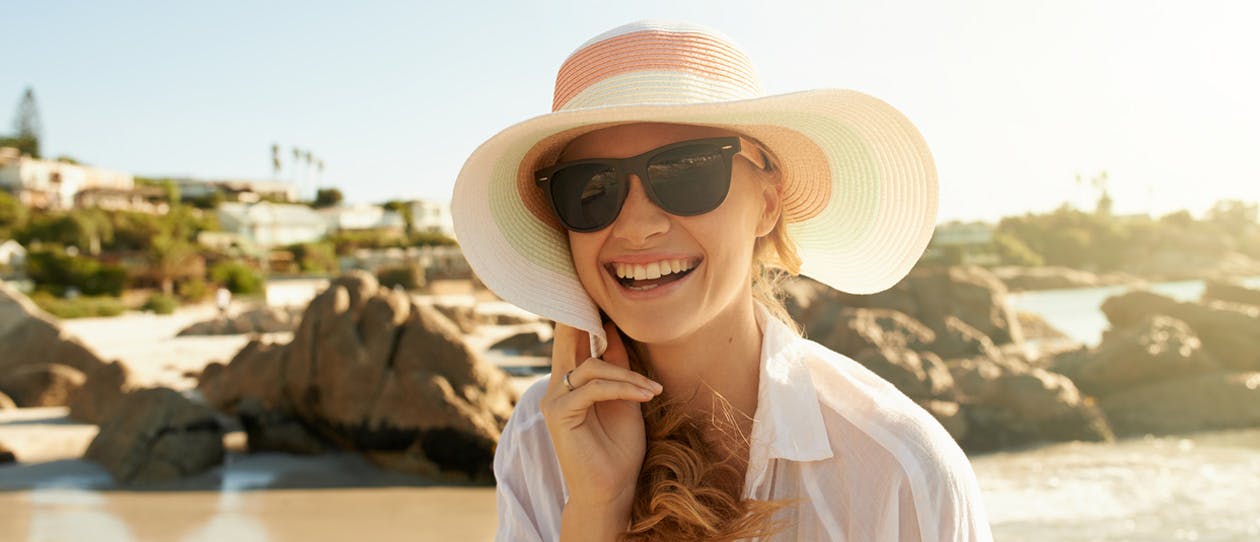Taking care of your skin is vital: drinking enough water and eating fresh, wholesome foods are imperative for your skin’s health.
Wearing sunscreen is another. One of the biggest causes of skin damage, along with premature ageing and eye damage , is
UV (ultraviolet) radiation from the sun.
UV radiation is divided into three categories: UVA, UVB and UVC. UVB is the major cause of sunburn, while UVA contributes to ageing of the skin. (UVC can’t penetrate the earth’s atmosphere .)
Australia has some of the highest levels of UV in the world, and the signs of sunburn can start to appear within 11 minutes on a hot summer’s day. The best way to protect your skin? Wearing sunscreen, every day. And not just any sunscreen, but SPF50+.
Until a few years ago, SPF30+ was the highest-rated sunscreen you could buy over the counter. However, in 2012, a new standard for sunscreens was introduced, which increased the maximum SPF from 30+ to 50+.
“The UVB protection levels remained the same [in 50+] but the UVA levels were improved,” says Craig Sinclair, chair of Cancer Council Australia’s Skin Cancer Committee.
But what does SPF – sun protection factor – actually mean in terms of our skin?
“SPF refers to the length of time it takes for skin to burn, after you have applied sunscreen,” says Sinclair. “So, if you normally burn within five minutes [without sunscreen], when you wear a sunscreen with an SPF30+, you’ll have 150 minutes before your skin will begin to burn. With SPF50+, it will be 250 minutes before you begin to burn.”
But it’s not just a case of simple mathematics. Sinclair warns that those figures really only apply within the context of sunscreen being tested in a laboratory.
In the real world, “Sunscreen should be reapplied every two hours to account for the likelihood of less than adequate application or it being rubbed off due to towel drying, swimming, etc.”
Related content
7 ways to look after your skin this summer
More summer skin savers
Does that mean SPF50+ is completely superior to its 30+ counterpart?
According to the Cancer Council of Australia, we shouldn’t consider SPF50+’s level of protection as the be-all and end-all.
“50+ offers slightly better protection from UVB radiation than 30+ sunscreen, filtering out 98 per cent of UVB radiation compared to the 96.7 per cent blocked by 30+," says Sinclair.
The most important factor is actually wearing sunscreen every day, and making sure you are wearing the right amount. “Use at least 1 teaspoon of sunscreen for each limb, on the front and back of the body, and half a teaspoon each for your face, neck and ears,” says Sinclair.
“Re-apply every two hours, or after each time you swim, exercise dry yourself with a towel.”
The old
slip, slop, slap tagline still applies: as well as wearing sunscreen, make sure you wear protective clothing, sunglasses and a hat, and seek the shade wherever possible .”
Also remember that it takes about 15 to 20 minutes for sunscreen to be absorbed into the top layer of your skin, so build that timing into your skin protection routine.


